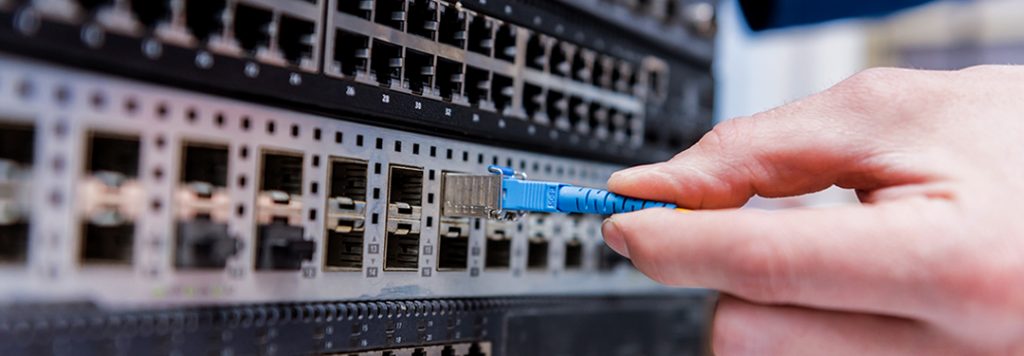
Backup, backup, backup! Since 2002, IT Support LA has been repeating this mantra – for very good reasons: It can save your business. There is still a great number of Old-School ‘Break & Fix’ (B&F) ‘IT Guys’ clogging the phone directories with inexperienced, unknowledgeable, and inept purveyors of the shoddiest type of ‘IT Support.’ It’s a pay-as-you-go setup, so it seems cheaper, but many crucial components to a safe, secure network are not seen to – from cybersecurity to reliable data backups.
What is local backup?
By definition, a local or ‘on-premises’ backup is physically close at hand to the end users and offers the fastest recovery and restoration, as well as housing the most copies. This is the most important backup, as there are 4 main issues that can occur where local backup is crucial:
- Failure of main server (what we call production environment)
- Intentional/unintentional deletion of data
- Ransomware or other virus attacks
- Disaster of any type, specifically natural, like an earthquake, fire, or flooding
A good backup will protect you against #1 through #3 above. No local backup will protect against #4: natural disasters.
There are 4 common, yet ineffective ways that local backups are improperly set up. No reputable member of the IT Support Los Angeles Community would ever suggest these methods. In fact, IT Support LA has turned down prospective clients if they insisted on retaining this weak, archaic technology. It would only turn disastrous, with the client expecting to be able to pin the blame on the IT support company. The following 4 backup types will all protect you against #1 and #2 above, but they will NOT protect you against #3, Ransomware/Cyber-attack, and as stated, NO local backup will guarantee protection against #4:
- Using archaic systems like Tape drives
- Using external drives
- Using Windows Backup
- Keeping even properly setup storage on the same network as the main server
As most savvy business owners tell us, one of the primary reasons they backup their data is to protect against the widespread threat of Ransomware. As none of these methods will do that, they are not the be-all and end-all of your data backup and storage.
What is the best way to backup data?
The ONLY setup that will give you full protection is by utilizing a Dedicated Storage unit on a dedicated network that is separate from the main network. Set this up with a dedicated login password (different than any other admin password the organization has) and use a specialized software from a vendor that specializes only in backup.
Your data is the lifeblood of your business, and relying on Old School, archaic technologies leaves you unprotected. Don’t wait for disaster to strike.
As mentioned, no matter how good your setup is, even if it’s the best setup per our guidelines above, no local backup will ever protect against #4 – natural disasters, so it is imperative to incorporate a strategy of both Local and Cloud Backups.
Find out how good your Backup and Disaster Recovery system is. It costs you nothing.
Your Free Network Security Assessment is waiting for you, with NO obligation to ever use our full Managed IT Services. There are no strings, and the comprehensive report we produce is yours to keep. Either fill in the form on this page or call us at:
818-805-0909
Your New and Redefined IT Experience Begins with a FREE Consultation.
Give us a call or schedule online today!
Frequently Asked Questions
Q: What would justify using local backup?
A: People often ask, “Why do I need local backups if everything is also being backed up to the cloud?” Speed – both in routinely retrieving data for normal office use, but if you do encounter a disaster like Ransomware, restoring the data from local backups to freshly wiped workstations is leaps-and-bounds faster than restoring straight from the cloud. Think of it like this: The local backup is your bank, the cloud is Fort Knox.
Q: Which device is used to backup the data?
A: Firstly, as far as devices go, just forget the tape drives, optical storage (CDs, DVD,s etc.) SD cards, flash drives, and external hard drives – they are cheaper, but amateurish in this day and age and leave you easily vulnerable to mistakes and disasters. Backing up to a device that needs to be physically removed from the network is a tedious chore, and tasks like that become forgotten over time.
A Network Attached Storage (NAS) drive is only good if it is not permanently attached to the network, and therefore vulnerable to data breaches and Ransomware. It must be a dedicated and stand-alone storage device. As a Managed IT services firm, we at IT Support LA have put these or similar devices in place so that they can easily backup the data, yet remain separate from the main network.
Q: What is the risk of not having backup?
A: The ultimate risk is going out of business. Over 50% of businesses hit by Ransomware go under within a year of the attack. As a Managed Services Provider, IT Support LA regularly meets with business owners, some of whom still ‘wave off’ the idea of not just multiple backups, but even a single dedicated local backup. Thinking that you are safe as long as employees hit ‘save’ on their documents leaves you open to cyber-attacks of all sorts, not to mention the threats of rogue or disgruntled employees and natural disasters. Any Managed IT services provider that will take on such a client is putting their own reputation at risk if disaster strikes. Below-par IT services ‘Guys’ who work by the hour typically do not care what you do – they are just there to fix things that break. They call IT Support LA begging for help when Ransomware hits them.
Q: Can lost data be recovered?
A: Sometimes yes, sometimes no. With no offsite backups, it’s hit and miss. IT Support LA came to the rescue of a small non-profit that had NO IT support, after one of their buildings burned down. At that point it was forensic data retrieval – literally extracting what data we could from hard drives taken out of charred computers.
Q: How can you protect data?
A: As we have mentioned – constantly backup data to a minimum of 2 locations: local backup and cloud backup. The other top priorities are data encryption, Firewalls & Anti-virus, observance of all operating system security patches & updates, secured wireless network, and employee Security Awareness Training, among many others.
Digital Guardian lists the Top 101 ‘Best Practices’ for data protection.


